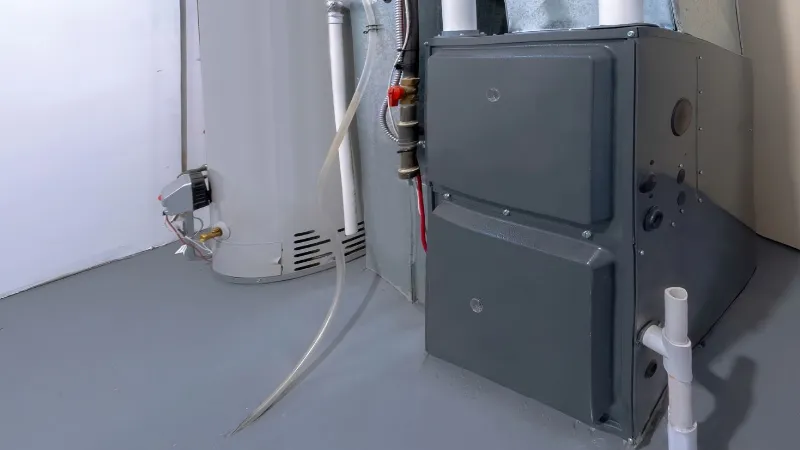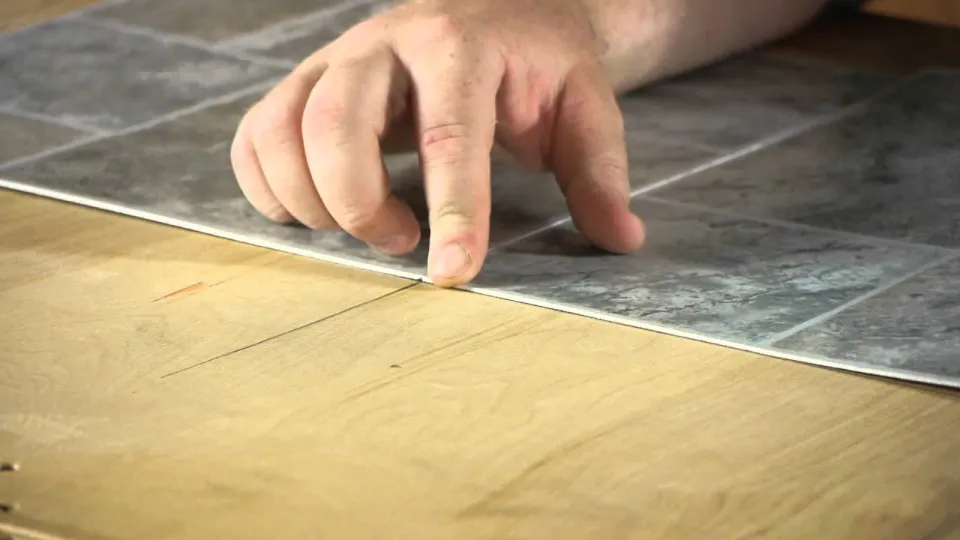To start with, how much does a gas furnace cost? To find out everything that affects the price to replace a gas furnace, keep reading.
The national average price of a gas furnace is $2,175. This falls within a typical installation cost range of $700 to $10,000, depending on the furnace type, size, brand, fuel source, and the size of the home.
Continue reading for details.
How Much Does a Gas Furnace Cost?
- Typical Range:$700 to $10,000
- National Average:$2,175
A furnace is an essential feature of a home. It ensures that a home’s internal systems, like water pipes, are able to work properly as well as keeping the temperature comfortable for its occupants. It doesn’t take long for a broken furnace to make a home unsafe to live in.
Knowing how much it will cost to replace a furnace before it breaks down can help a homeowner plan their budget. The typical price range to install a gas furnace is between $700 and $10,000, with the national average gas furnace cost coming in at $2,175, according to Angi and HomeAdvisor. The final cost is determined by the type, size, brand, fuel source, efficiency, size of the house, and labor.
This guide will cover the different factors affecting a new furnace cost, along with money-saving tips, and provide a breakdown of the main benefits of choosing a gas furnace.
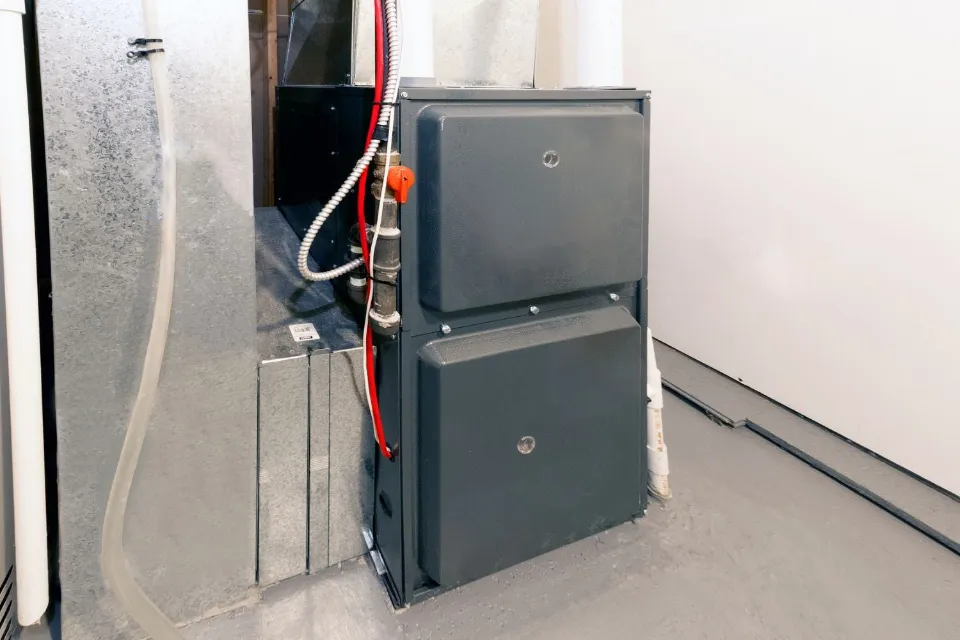
Gas Furnace Price Factors
The price of a new gas furnace can vary based on the furnace’s dimensions, the size of the house it is heating, its energy efficiency, the fuel type (true natural gas vs. propane), and whether it’s a downflow or upflow unit.
You might not end up saving the most money by looking for the cheapest furnace. When making your choice, take into account the furnace’s durability and efficiency.
| Furnace Size (BTU) | Typical Furnace Cost with Installation* |
| 40,000 | $2,000 – $3,500 |
| 50,000 | $2,300 – $3,800 |
| 60,000 | $2,500 – $4,200 |
| 75,000 | $2,700 – $4,600 |
| 80,000 | $3,000 – $4,900 |
| 100,000 | $3,400 – $5,400 |
| 120,000 | $4,000 – $6,000 |
*Prices reflect a standard 80%-85% AFUE rating. High-efficiency furnaces cost between 50% and 100% more. The table above shows the full furnace installation cost, including labor and materials, by size. In actuality, the size is what determines the cost of a new gas furnace.
BTUs, or British thermal units, are used to gauge furnace size. BTUs represent the amount of heat needed to raise the temperature of 1 pound of water by 1 degree Fahrenheit.
How does that translate to furnace size? Gas furnaces range from 40,000 BTUsfor a small space in a moderate climate to 125,000 BTUsfor a large space in a colder climate, but you can find furnaces offering as low as 25,000 BTUsand more than 150,000 BTUs.
Older homes frequently require higher BTU models due to their poorer insulation compared to newer homes. The size of your home and your climate zone, however, are the two main variables in determining BTUs.
Size of Home
The amount of BTUs your furnace needs and, consequently, the general cost of a gas furnace, are greatly influenced by the size of your home. A 1,000-square-foot home might need 45,000to 50,000 BTUs(with a furnace cost of $600 to $1,900) while a 2,000-square-foot home could need 90,000 to 100,000 BTUs(at a new gas furnace cost of $900 to $2,600).
| Square Footage of House | Average BTUs Needed | Average Cost of Gas Furnace Unit |
| 1,000 square feet | 45,000 – 50,000 BTUs | $600 – $,1900 |
| 2,000 square feet | 90,000 – 100,000 BTUs | $700 – $2,200 |
| 3,000 square feet | 135,000 – 150,000 BTUs | $1,200 – $5,600 |
Climate Zone
The size of the furnace needed for your home can be significantly influenced by the climate zone. Homes in the hottest parts of the country may only need 30 to 35 BTUs per square foot, while homes in the coldest parts of the country need 50 to 60 BTUs per square foot. For homes in colder climates, you may need to pay almost twice as much for a gas furnace.
Consult the U.S. Department of Energy’s climate zone map to determine your climate zone. In general, areas in the Hot-Humid, Hot-Dry, and Mix-Dry categories—as defined by the Department of Energy—will require fewer BTUs per square foot than those in the Cold and Very Cold categories.
A local furnace installation contractor will be familiar with the typical heating requirements for homes in your climate zone.
Energy Efficiency
High-efficiency furnaces can cost $2,000 to $6,000, about twice the cost of a standard efficiency unit. Including installation, high-efficiency furnace costs can reach $13,000.
| Type | AFUE | Approximate Unit Cost |
| Standard Efficiency | 80% – 89% | $500 – $1,500 |
| Moderate Efficiency | 90% – 95% | $1,000 – $3,000 |
| High Efficiency | 96%+ | $2,000 – $6,000 |
A furnace’s efficiency is assessed using the Annual Fuel Efficiency (AFUE) rating. Although 90% or higher furnace ratings are generally regarded as high efficiency, there is a price difference between 96% and above (true high efficiency) and 90% to 95% (moderate efficiency). A furnace with an AFUE rating of 80 is 80% efficient, while one with a rating of 90 is 90% efficient.
High-efficiency models increase comfort (less temperature fluctuation in your home), run more quietly, and can save you money in the long run via lower monthly utility bills and potential tax and rebate incentives.
In general, there are three types of furnaces to consider:
- Furnaces with one stage: $700 to $3,500.These furnaces are the most prevalent and have a very straightforward on-off mechanism. That indicates that there is only one heat setting. These are typically the least expensive options, but they are also the least effective and comfortable.
- Furnaces with two stages: $1,100–3,600.Because it has both high and low settings, a two-stage furnace provides more comfort while also being more effective.
- Furnaces with modulation: $1,300–6,700.The newest type of furnace is a variable-capacity system with a variable-speed blower. You can set the temperature more precisely with these thanks to computer-controlled thermostats. Although it may be more expensive to buy and install, this can be much more efficient.
Fuel Source
A natural gas furnace cost can range from $700 to $3,500for a standard efficiency model, but you can also consider an alternative fuel source, propane, for roughly the same price: $700 to $3,600.
The cost to install a propane furnace can be $1,000 to $2,000 cheaper than a natural gas furnace, but heating your home with propane can cost from $1,000 to $2,500 per year; that’s potentially double or triple the cost of heating with natural gas.
However, homes in remote areas and off the grid can use propane.
Downflow Vs. Upflow
Downflow and upflow furnaces cost anywhere from $700 to $3,500for standard efficiency models. The cost to install each type might vary depending on the ease of access and the level of ductwork installation required by the furnace contractor you hire.
Downflow furnaces bring cool air from the top and blow out heated air from the bottom. They are therefore perfect for attics, mobile homes, and homes without basements.
In contrast, upflow furnaces pull cool air in from the bottom of the air handler and push heated air out the top. You can heat a home with a basement more efficiently with an upflow furnace.
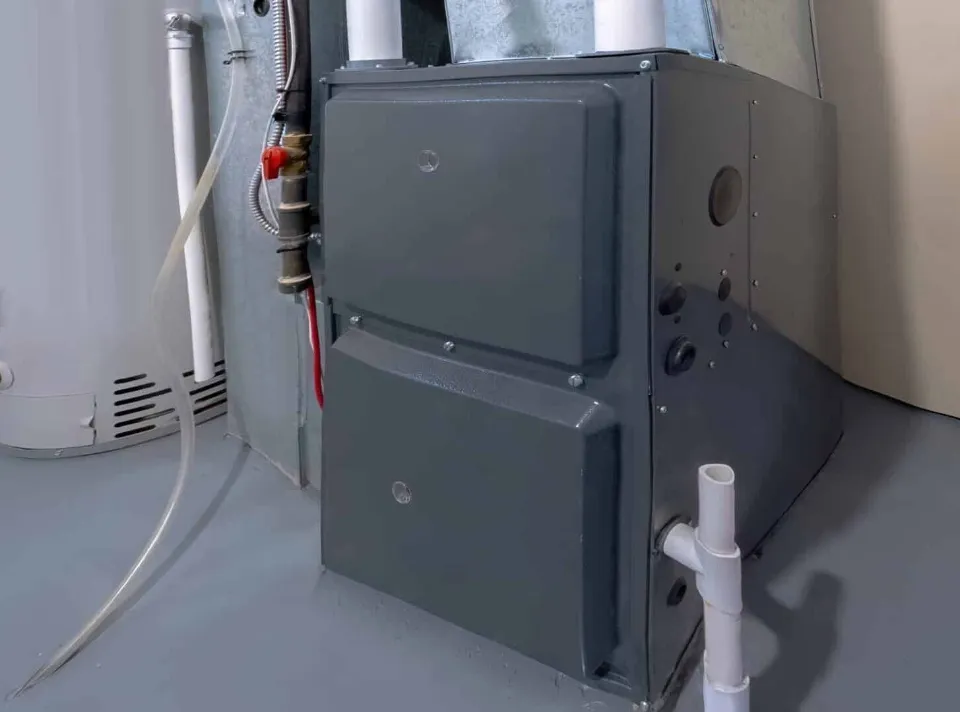
Gas Furnace Installation Cost Factors
| Installation Cost Factors | Cost |
| Duct Installation | $450 – $2,050 |
| Labor | $50 – $150 per hour |
| Fees and Permits | $250 – $400 |
| Furnace Conversion | $150 – $6,500 |
Ductwork
Installing new ductwork costs$450 to $2,050 with a general cost of $10 to $20 per linear foot. Even if you already have ductwork, if your contractor finds leaks you may need to replace it. Leaks can lead to a loss of 10% to 30% of the heat from your furnace. This loss is typically reduced to less than 5% with properly sealed ductwork.
Down the line, expect regular ductwork maintenance costs:
- Cleaning ducts costs$275 to $500.Get an inspection and cleaning at least once a year.
- A home energy audit costs$200 to $700and helps discover leaks.
- Asbestos remediation costs$1,150 to $3,050. Older houses may have asbestos-lined or asbestos-covered ducts. Since they pose a significant health risk, homeowners should never handle them. If you suspect this type of lining, contact an asbestos inspector near you. But don’t worry—according to the majority of experts, asbestos is safe until it is disturbed.
Labor
Labor runs $50 to $150 per hourwith each worker clocking an additional$50 per hour. Installation runs about 4 hours for a simple replacement and 10 to 15 hours for a straightforward new install.
Fees and Permits
Building permits cost from $450 to $2,300 in general, but for an HVAC job like a new furnace installation, expect to spend between $250 and $400.
At various points during the process, the majority of permits demand inspection. After the installation, it’s not a bad idea to get an impartial inspection from an outside source.
Furnace Conversion
Furnace conversion costs can range from as little as $150for a natural gas to propane conversion or $500 to$6,500for the removal of an oil heater and installation of a new gas furnace.
It’s simple to switch from natural gas to propane. You just need to purchase a conversion kit for roughly $50 to $150, then hire a contractor to install it. Labor costs should fall between $100 to $150 for the conversion.
However, removing an old oil fuel tank can cost between $500 and $6,500. Local laws and the potential complexity of your project are the main reasons why it varies so much.
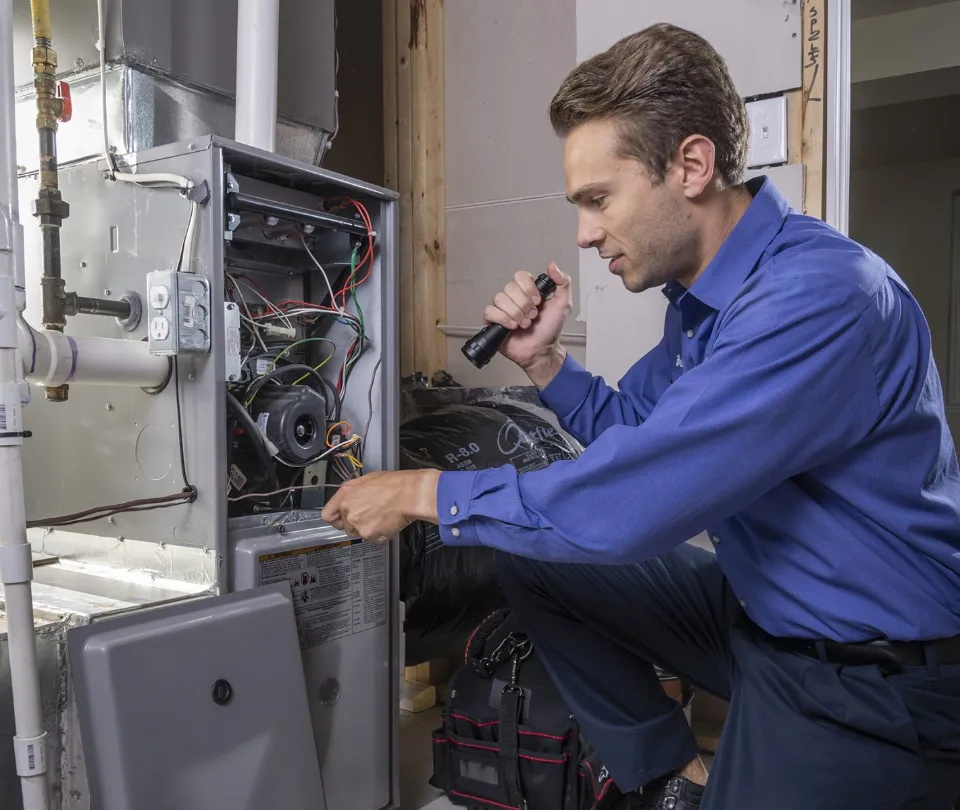
Types of Gas Furnaces
The design of every gas furnace varies. Different types of furnaces have different price ranges based on how they’re manufactured. Additionally, they might need various installation techniques, which would affect the labor cost ranges. In order to estimate furnace repair costs, homeowners can refer to the following information.
Single-Stage
The most prevalent type of gas furnace found in homes today is the single-stage furnace. They have a very simple operational process, with a single on-off mechanism. Because there is only one heat setting, this makes a single-stage furnace simple to use. This, regrettably, also means that this kind of furnace is the least effective and may be the most challenging to regulate in terms of comfort. With an installation range of $700 to $3,500, they’re the most affordable type for homeowners to choose from.
Two-Stage
A two-stage furnace is a condensing furnace with two levels of heat output: Low and high. Homeowners can now more easily regulate the temperature inside of their dwellings. The majority of two-stage furnaces have technology that enables it to automatically switch to whichever output will maintain the most constant comfort level without operating at a higher output than necessary. The price range for two-stage furnaces is $1,100 to $3,600.
Modulating
The most expensive furnaces are modulating ones, with installation costs ranging from $1,300 to $6,700. A modulating furnace enables a homeowner to be very specific about temperatures throughout their home using a computer-controlled thermostat. This particular furnace has a variable-capacity system and a variable-speed blower. A modulating furnace is more expensive to buy and install as a result of all these upgrades, but they are also incredibly efficient, which can eventually lessen the financial blow.
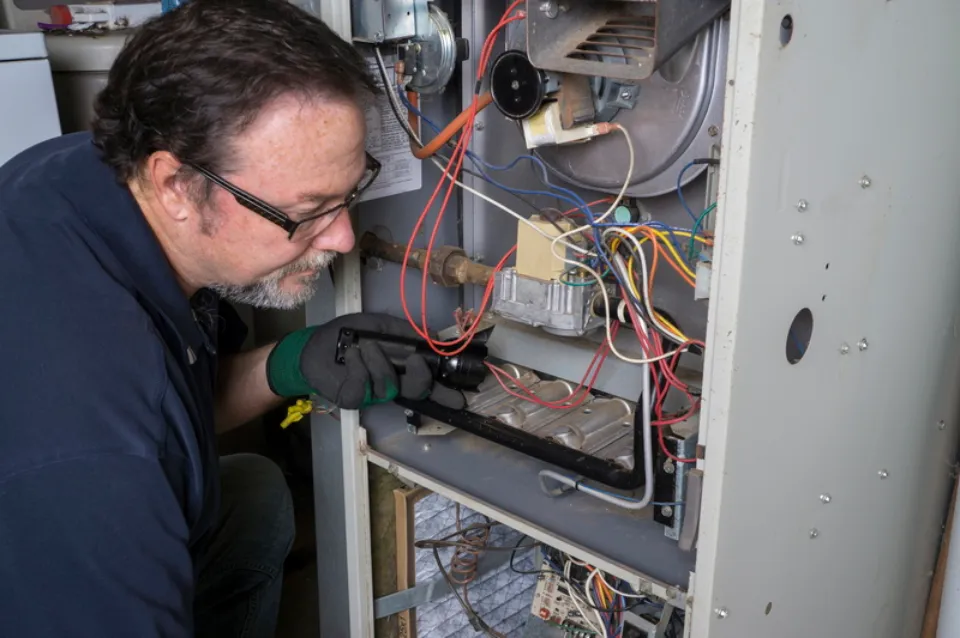
Gas Furnace Installation: DIY Vs. Hiring a Professional
It makes sense why homeowners might try to install their own gas furnace themselves in order to save on labor costs given how expensive gas furnace installations can be. A heating system, however, may be too complex for the majority of homeowners. This is not a home improvement job where there is room for error, so industry knowledge is a requirement.
The most important benefit of hiring a contractor to install a furnace is their experience, although there are other advantages as well. A contractor has probably put in hundreds of furnaces and encountered almost every conceivable situation. Research alone won’t provide a homeowner with this type of experience.
Additionally, parts and units are easier to access for contractors. In fact, some manufacturers only permit qualified technicians to purchase their highly efficient furnaces and most affordable HVAC systems. This guarantees that their units are always installed correctly, resulting in better reviews and ratings. Additionally, HVAC contractors might have access to wholesale or discounted prices that homeowners would not have on their own.
Last but not least, installing a gas furnace on your own can be risky, which is why many municipalities demand permits for this kind of work. This means that legally, a homeowner cannot install their own furnace without the potential for costly fees. Making a mistake during installation can result in a lot of repair costs or, worse yet, risk severe damage like dangerous gas leaks and even explosions.
Although installing a gas furnace isn’t the cheapest home improvement project, homeowners who attempt to save money by performing a DIY installation may end up spending more time and money overall. On a gas furnace installation, it is always advised to work with a HVAC contractor.
Questions to Ask Your Installer
After consulting with friends and family about HVAC contractors they’ve used and reducing your list of candidates to, say, five to ten, you’ll look to compare quotes.
Three quotes are the suggested minimum. Any number over seven is excessive. In addition to learning the final cost of the project, there are some crucial inquiries you should have the answers to in order to be prepared for ongoing maintenance. These may include:
- Are you devoted to a particular brand for the installation?
Ideally, you should hire an HVAC technician who can install any model that you like. However, it’s common for HVAC contractors to be authorized dealers of the brands they suggest.
You might find the best contractor if you already have a particular brand in mind that you know you want. Being open to more options can be a disadvantage since the other brands will probably be minimized in favor of their purportedly superior product.
- What is your background with this kind of gas furnace installation?
There are several ways to ask this, and it’s up to you how closely you want to follow up. Do some research to find out if there have been any complaints about them or what their BBB rating is, if you decide to do so. You primarily want to know how well they will complete an appropriate installation.
- Tell me about the warranty information, please.
Contractors will provide documents that spell this out in fine legal details, but best if they can explain it to you up front. It will be helpful in the future if they explain it to you as if you are a young adult so you can hopefully remember what is and isn’t covered in terms of repairs and replacement.
- Will you manually run a J Load Test to determine the correct furnace size for my house?
We advise that your HVAC contractor consent to perform an accurate J Load testing in order to properly size the gas furnace for your house. If the contractor is not willing to do it, consider looking for a different contractor.
- In my town or state, do you have a license and insurance?
Discussions about necessary local permits and inspections will also take place at this time. Although you, not the contractor, are in need of that, they will be able to inform you of it because they do it for a living.
- Is the model you are suggesting new or older?
Less testing is conducted on newer models than on older models. Older models might be less effective. If it’s an older model, perhaps follow up and inquire as to whether there are any known reliability issues.
- Are there any tax credits or rebates available for any of the models you’ve suggested?
This alone can’t be the deciding factor for which furnace you select. It is, however, comforting to know that choosing a specific model might result in a partial refund.
These are the main inquiries you ought to make. After reviewing the Selection information below, perhaps others that make sense to you will come up. Don’t hesitate to ask them in your quest to find the ideal contractor for installing your new furnace.
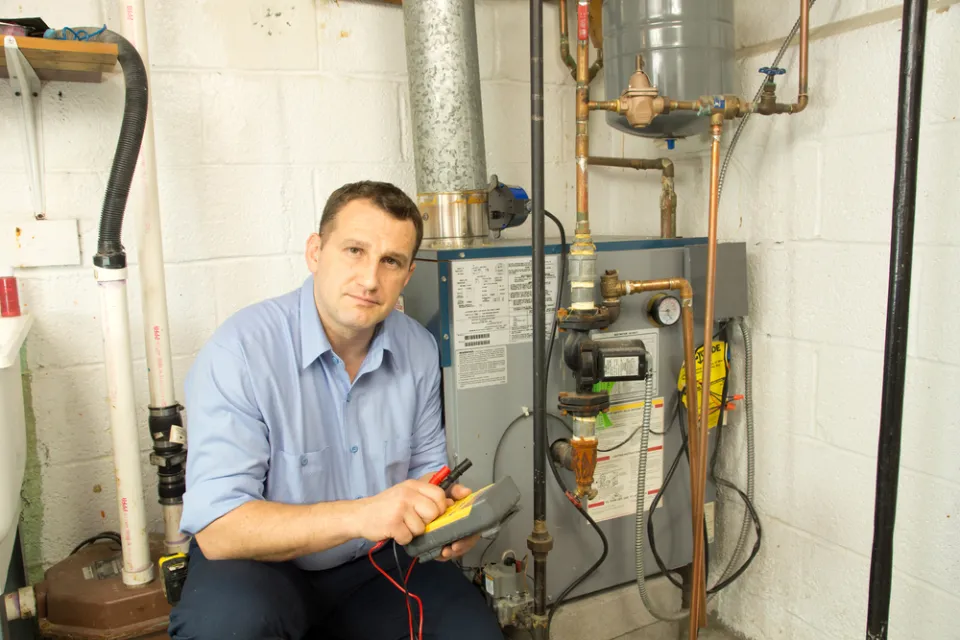
How to Save Money on Gas Furnace Cost?
For homeowners, installing or replacing a furnace can come with unexpectedly high costs. Fortunately, there are a few ways to reduce the cost of a new furnace. While others can help a furnace last longer, some can help reduce installation costs. The following are a few strategies for homeowners to cut gas furnace costs.
- Consult with several contractors and obtain several estimates.While replacing a furnace is frequently a last-minute emergency that must be attended to right away, taking the time to compare several estimates will guarantee an accurate diagnosis and a reasonable, cost-effective repair.
- Keep up on maintenance. As a result, a furnace’s lifespan will be increased, and ideally, a homeowner won’t need to replace their furnace before the expected time of replacement. The warning signs of a failing furnace should be known by homeowners.
- read brand reviews. While a contractor’s recommendation can be helpful when homeowners are looking for a replacement furnace, taking the time to read customer reviews of the brand and model being considered can help narrow the furnace field while pointing out any seemingly common problems. You can’t always get a high-performing model by just looking at price.
- As soon as you can, replace the furnace. An uncomfortable environment can quickly develop in a house when the furnace breaks down. In fact, living in a house without a functional furnace can be dangerous. However, other problems around the house can pop up suddenly. For instance, frozen pipes can burst and flood as well as damage other appliances like dishwashers and washing machines. In an effort to save money, a furnace should be fixed as soon as possible.
- Compare replacement with maintenance in terms of cost. repair.Homeowners can check to see if a more affordable repair is an option if the cost of replacing a gas furnace seems insurmountable. However, if the repair will only buy a short period of time, looking into other options like financing or a loan to help cover the costs of replacement may make more financial sense in the long run.
Suggested reading: Even though Vans shoes are built to withstand the abuse of skateparks, they occasionally need some tender loving care. Here’s the question, can you put vans in the washing machine?
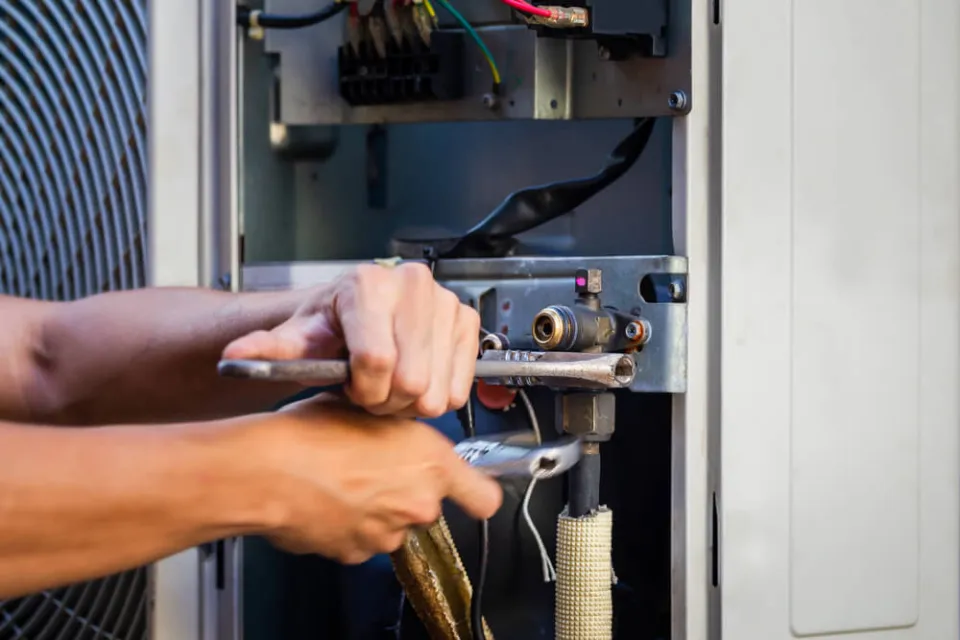
FAQs
How Much is a Furnace for a 1500 Square Foot House?
The average cost to replace a gas furnace in a 1500-square-foot house is between $2,990 and $4,360. For a standard-efficiency gas furnace, a 60,000-80,000 BTU model is the best choice.
Is a Gas Furnace Cheaper Than Electric?
Electric furnaces typically have lower initial costs, and they might also have significantly less expensive installation costs. This is especially true if a building lacks natural gas delivery infrastructure.
Why Are Furnaces So Expensive?
The biggest reason why furnace cost varies is because of the fuel source. There are three main fuel source types: oil, electricity, and natural gas. In addition to ongoing costs for the fuel itself, each of these types has a different price for construction, upkeep, and installation.
Is a Gas Furnace Worth It?
With the price of natural gas fuel rising, your wallet will thank you in the long run if you have a higher efficiency gas furnace! Your monthly utility costs will decrease the more energy-efficient your gas furnace is!
How Many Years Does a Gas Furnace Last?
A well-maintained furnace can last at least 15 to 20 years, but completing annual maintenance and being diligent with repairs can extend its life even longer.
Summary: How Much Does a Gas Furnace Cost?
The national average cost of a gas stove is $2,175. Depending on the type of furnace, its size, brand, fuel source, and the size of the home, installation costs can range from $700 to $10,000.
If you have any questions, please leave a comment. My Prime Home tries to give you the best home improvement information. Don’t forget to share the post. Thank you for reading.
Read about
